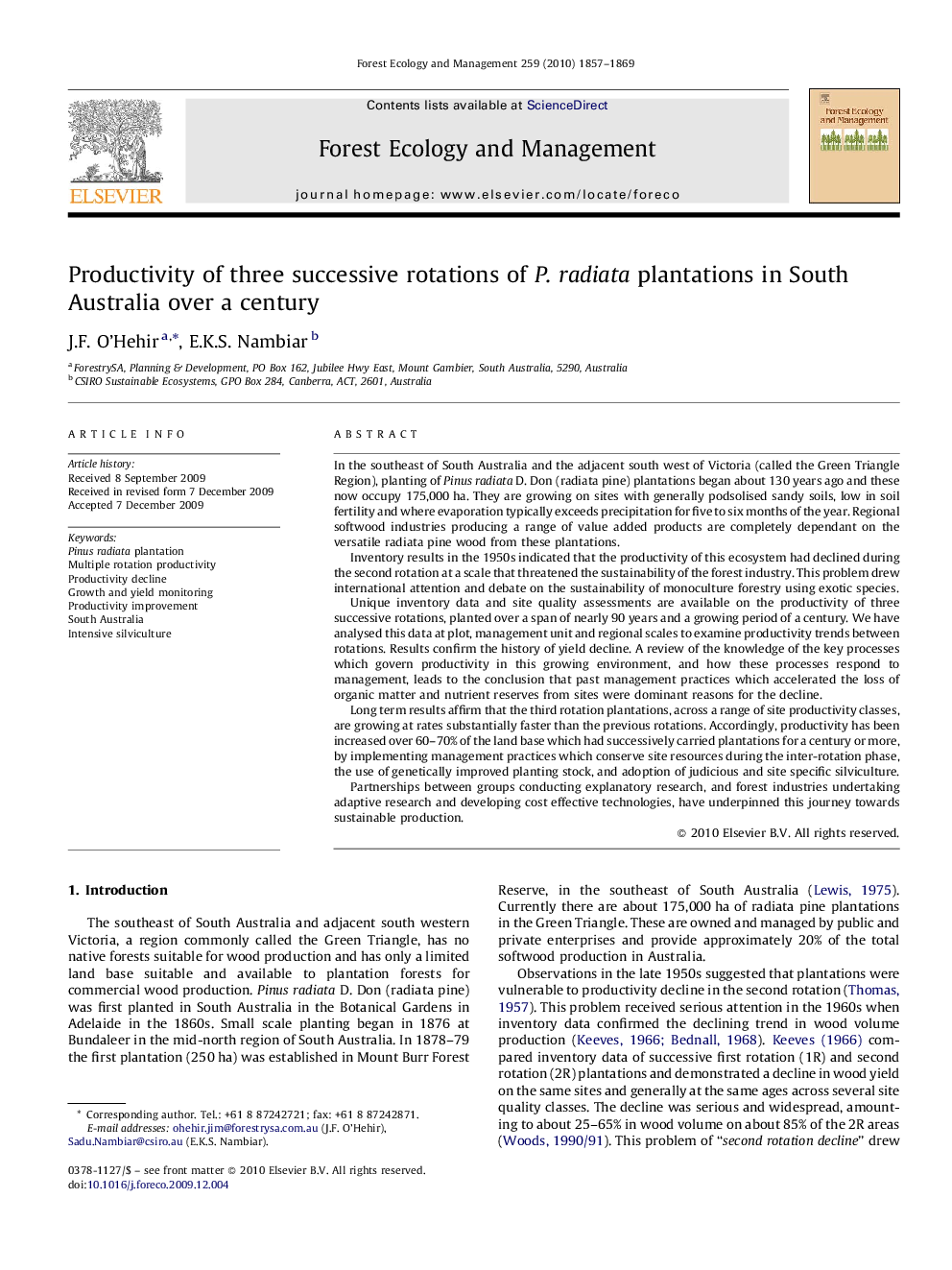| کد مقاله | کد نشریه | سال انتشار | مقاله انگلیسی | نسخه تمام متن |
|---|---|---|---|---|
| 88256 | 159293 | 2010 | 13 صفحه PDF | دانلود رایگان |

In the southeast of South Australia and the adjacent south west of Victoria (called the Green Triangle Region), planting of Pinus radiata D. Don (radiata pine) plantations began about 130 years ago and these now occupy 175,000 ha. They are growing on sites with generally podsolised sandy soils, low in soil fertility and where evaporation typically exceeds precipitation for five to six months of the year. Regional softwood industries producing a range of value added products are completely dependant on the versatile radiata pine wood from these plantations.Inventory results in the 1950s indicated that the productivity of this ecosystem had declined during the second rotation at a scale that threatened the sustainability of the forest industry. This problem drew international attention and debate on the sustainability of monoculture forestry using exotic species.Unique inventory data and site quality assessments are available on the productivity of three successive rotations, planted over a span of nearly 90 years and a growing period of a century. We have analysed this data at plot, management unit and regional scales to examine productivity trends between rotations. Results confirm the history of yield decline. A review of the knowledge of the key processes which govern productivity in this growing environment, and how these processes respond to management, leads to the conclusion that past management practices which accelerated the loss of organic matter and nutrient reserves from sites were dominant reasons for the decline.Long term results affirm that the third rotation plantations, across a range of site productivity classes, are growing at rates substantially faster than the previous rotations. Accordingly, productivity has been increased over 60–70% of the land base which had successively carried plantations for a century or more, by implementing management practices which conserve site resources during the inter-rotation phase, the use of genetically improved planting stock, and adoption of judicious and site specific silviculture.Partnerships between groups conducting explanatory research, and forest industries undertaking adaptive research and developing cost effective technologies, have underpinned this journey towards sustainable production.
Journal: Forest Ecology and Management - Volume 259, Issue 10, 30 April 2010, Pages 1857–1869